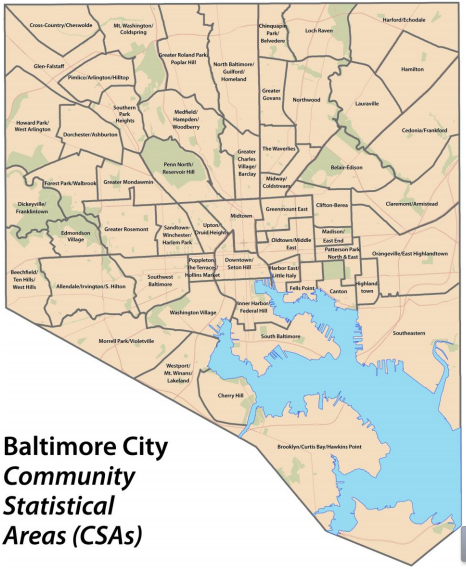As of 2011, city government owns 19.7 percent of vacant buildings in Baltimore, more than three-fourths of homicides were caused by a gun and there are 2.3 liquor stores for every 1,000 residents.
These are some of the data points from the release of Vital Signs 11 from the Baltimore Neighborhood Indicators Alliance-Jacob France Institute at the University of Baltimore.
Since 2001, BNIA has been collecting quality-of-life data about Baltimore by dividing the city into 55 community statistical areas and tracking different “indicators.” In other words:
- The Vital Signs, like “Housing and Community Development” and “Census Demographics,” are broad, general categories.
- Inside those categories are a number of indicators. “Percentage of properties under mortgage foreclosure,” for instance, is an indicator included in the “Housing and Community Development” Vital Sign.
View the Vital Signs 11 data here. Read the introduction to the Vital Signs 11 report here.
By last summer, 10 years into Vital Signs data, BNIA had collected 55,000 individual data points.
For Vital Signs 11, more than 150 quality-of-life indicators were examined and collected, which means an additional 8,000 data points are now in BNIA’s compendium of community and neighborhood data.
What’s more, BNIA introduced new quality-of-life indicators in Vital Signs 11, including home foreclosure rates, walkability ratings of Baltimore city neighborhoods and information on the accessibility of healthy food.
“There are new indicators in every section [of Vital Signs],” said Seema Iyer, associate director of the Jacob France Institute, in an e-mail.
Other highlights from the release of Vital Signs 11:
- A redesigned BNIA website that is “still in development mode,” said Iyer. “The data downloads feature will be ready next week, for example.”
- Interactive mapping: this new feature covers “data that we collect that helps coordinate decision-making on specific topics/coalitions,” Iyer said. Two maps — one on Baltimore city foreclosure data and another on real estate development in Central Maryland — are presently available, with a third on water quality and community-managed open spaces on its way.
Data highlights from the release of Vital Signs 11:
- More than half of the city’s renters spend more than 30 percent of their income on rent.
- There are 2.3 liquor stores, 1.4 fast food stores, and 0.2 banks per 1,000 residents in 2011.
- One-fourth of Baltimoreans have an active library membership with the Enoch Pratt Free Library.
- 7.8 percent of homes received a vacant house notice, but that percentage declined most in Greenmount East and Madison East End.
All the data from previous Vital Signs reports will be available for download on the BNIA website. BNIA will also be working with the Mayor’s Office of Information Technology to upload Vital Signs data to the OpenBaltimore portal, but data from Vital Signs 10 is already available through the portal, as Technically Baltimore reported.
Before you go...
Please consider supporting Technical.ly to keep our independent journalism strong. Unlike most business-focused media outlets, we don’t have a paywall. Instead, we count on your personal and organizational support.
Join our growing Slack community
Join 5,000 tech professionals and entrepreneurs in our community Slack today!




